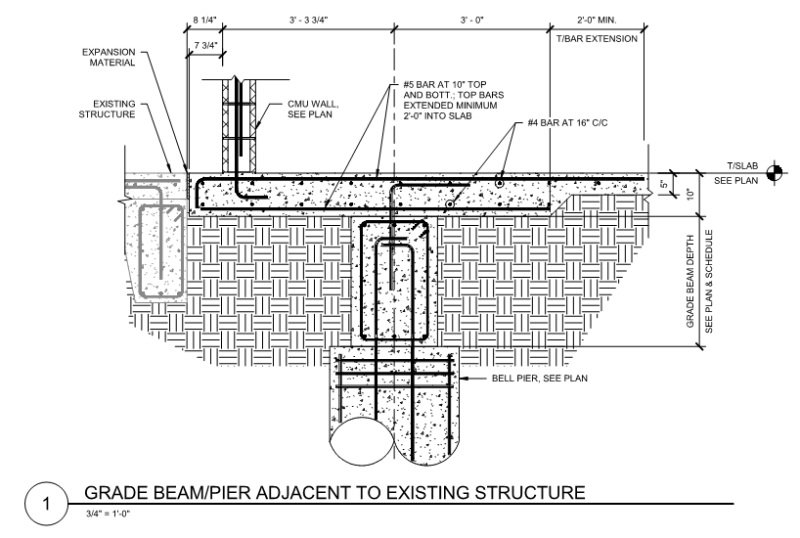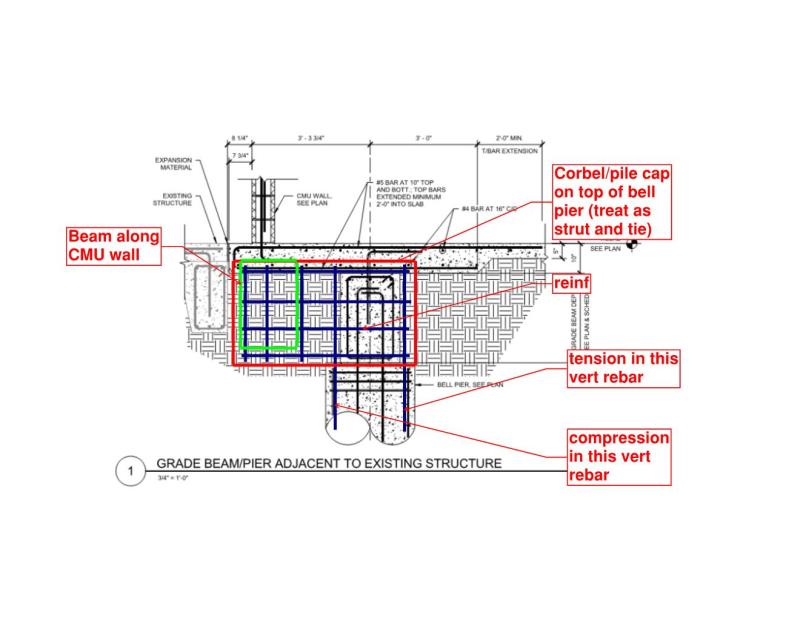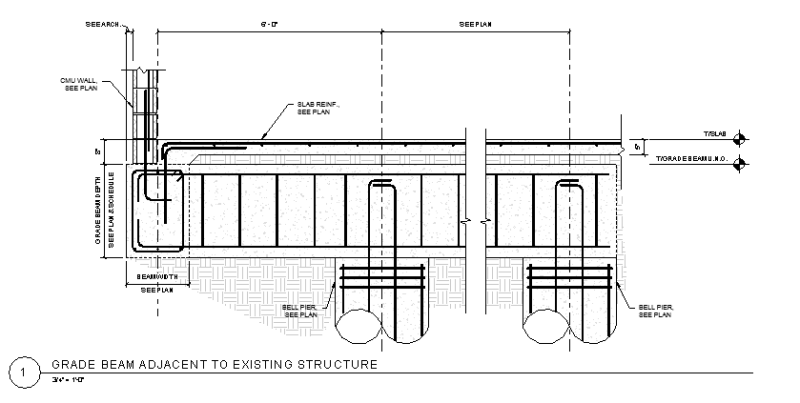I have a situation where due to existing structure I need to install bell piers a few feet away from a new load bearing CMU wall. I plan to design a cantilevered structural slab to pick up the load bearing wall and continue the structural slab back past the grade beam until the slab on grade/structural slab interface can withstand the resultant shear. I wanted to confirm my checks were adequate:
1. checking shear/moment strength of cantilever structural slab at grade beam
2. checking deflection at load bearing wall and back span deflection beyond the grade beam
3. checking shear at structural slab/slab-on-grade interface
Any other concerns I should look out for? See preliminary detail below:

1. checking shear/moment strength of cantilever structural slab at grade beam
2. checking deflection at load bearing wall and back span deflection beyond the grade beam
3. checking shear at structural slab/slab-on-grade interface
Any other concerns I should look out for? See preliminary detail below:



